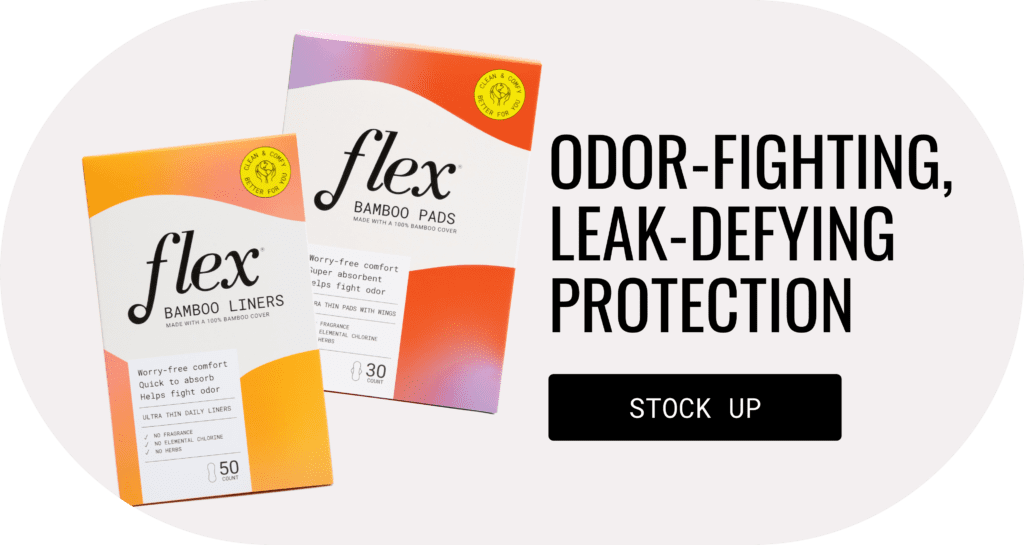Camel toe or camel NO? Here’s the honest truth
The year is 2003. You’re getting ready to meet your crush at the mall with your best friend as you excitedly rip the tag off your brand-new yoga pants. You slip them on, and secure the foldover waistband to achieve a trendy, low-rise fit. Your Pink Razr flip phone and scented Lip Smacker chapstick are stowed away in your Juicy Couture handbag until…
A silent, rumbling sensation begins to consume you. Not a rumbling from your stomach, but a different type of hunger. A hunger stemming from approximately six inches south.
“Is your crotch hungry? Because it’s eating your pants,” your best friend quips.
You look in the mirror and immediately feel deceived by what could only be compared to a startling surprise party being thrown below the belt – a melodramatic gathering of fabric that insists on being the center of attention. The diagnosis? A definitive case of yoga pants camel toe.
Read all about the evolution of the camel toe phenomenon and how it has gone from a fashion faux pas to a body-positive statement. From early 2000s wardrobe malfunctions to modern-day embrace of natural body shapes, the debate continues to spark conversations about empowerment, self-expression, and societal beauty standards. Join us as we explore its journey, from cringe-worthy moment to confident stride in this comprehensive guide.
The history of camel toe
The term ‘camel toe’ can be traced back around the 12th century when a man crossed through the desert, only to notice striking similarities between the split hooves of these water-hoarding desert dwellers and the symmetrical centerfold created by labia molded into overly constrictive fabric. The man took this phrase and ran with it (quite literally) until he reached the nearest town, in which the term was coined as a descriptive fashion faux pas for centuries to come.
This is the story of camel toe (oh, and this story is entirely made-up).
The term actually began circulating in the ‘90s but later became popularized in 2001 during a Late Night with Conan O’Brien skit titled “Camel Toe Annie,” featuring a woman wearing Spandex with a defining crease in the apex of her upper thighs. ‘Camel toe’ went on to become a critically acclaimed phrase in 2002, appearing in Urban Dictionary as a “crotch cleavage, especially on a woman. The outer lips of female genitalia visible through tight clothing.”


A year later, the hit single “Cameltoe” was released by a Brooklyn-based hip-hop trio, Fannypack. It didn’t take long for a wave of backlash to devour media headlines when a group of women published the website Tights Are Not Pants in 2008, featuring printable posters with slogans that read, “Tell your friends: TIGHTS ARE NOT PANTS.”
Major magazines, like Marie Claire, began calling camel toe “the most humiliating clothing disaster we know of” while proposing quick-fix solutions. To this day, the societal scolding of a camel toe is still widely inferred.
This is the TRUE story of camel toe (we’re serious this time).
What is a camel toe?
What began as a slang term used to describe the cumbrous circumstance that occurs when a person’s labia majora is visibly contoured as a result of cramped clothing has since become a socially identifiable spectacle for the ages. It is not just a phrase but a feeling. A full vibe. A moment in time in which the bearer of this fashion blooper is left to face a difficult decision: fix it or flaunt it.
What causes a Camel Toe
In most cases, extremely tight-fitting clothing plays a significant role and is one of the common causes. Fabrics such as 100% spandex, linen, polyester, and rayon may enhance the appearance of the mons pubis and labia, especially in warmer weather. Bottoms with a front middle seam or poorly placed front seams also have a tendency to set up camp within the labia’s cleavage, as the constrictive stitching doesn’t allow space between your body and the fabric.
Camel toe may also be more visible after childbirth as excess labial fat may become thicker or slightly looser(although this is subjective).


Common myths
In order to gain a better understanding of camel toes, continuing to challenge the myths and misconceptions surrounding the term’s negative connotation is vital in promoting body acceptance.
Below are some of the most common misconceptions:
“You have a loose vagina”
Let’s journey back to Anatomy 101, shall we? First things first, a camel toe refers to the physical appearance of the labia accentuated by tight-fitting clothes.
The vagina essentially refers to a person’s internal muscular organ, which has no correlation to this external appearance. The takeaway? A vagina can be loose with or without camel toe.
“Only certain body types get a camel toe”
Believe it or not, camel toe does not discriminate against specific body types. People with various body shapes and anatomies (yes, both vulva and testicle owners alike!) can experience the impact of their choice and personal style of clothing. It is essential to recognize that fashion is a form of self-expression that transcends gender norms and societal expectations. Embracing one’s unique identity through clothing choices can empower individuals to feel confident and comfortable in their skin.
“Wearing larger size clothing can prevent it”
Baggier clothing doesn’t guarantee the prevention of camel toe: it occurs even with the right size. Other important factors to consider are design features, which include seam placement, lining, and fabric choices.
“Shaving pubic hair can prevent it”
Don’t stock up on shaving cream just yet! Pubic hair has nothing to do with chronic camel toe, as it is predominantly influenced by clothing and body shape rather than grooming habits.
The social & psychological impact
While many immediately see camel toe as an unappealing and culturally ostracized symptom of improperly fitted pants, the issue surrounding its stigma stems from a lack of empathy for people who experience this phenomenon. By understanding their psychological impact, we can work towards a society that promotes support and inclusion.
Body shaming & stigma
The social stigma surrounding a camel toe can lead to extreme body shaming while continuously reinforcing unrealistic beauty standards. This results in a negative body image, especially among those who are self-conscious and fear judgment from peers in a modern society that craves social acceptance. By recognizing the diversity of the human body and advocating for various representations in media and fashion, we can continue to redefine beauty standards and sustain a much more inclusive society.
Camel toe double standards
It’s almost impossible to envision the “male version” of a camel toe and not think about a man flaunting an obvious bulge in a pair of gray sweatpants, which is given the same treatment as a work of art displayed in the Louvre.
Camel toes reveal the perplexing double standards of fashion; when realizing that while men’s fashion flaunts its freedom, women’s clothing can lead to raised eyebrows, reminding us that even clothing can be a subtle commentary on societal norms and expectations placed upon individuals based on their gender.


How to prevent camel toe if it’s not your thing
Beauty standards and stigma aside, walking around with a perpetual crotch vortex can be downright uncomfortable and annoying. Here are some preventative measures in order to reduce the likelihood of camel toe, it if you’re just not feelin’ it:
✔️Choose the right size. Opt for clothing with a proper fit, especially in the crotch and groin area
✔️Avoid extremely tight or overly stretchy materials that might bunch up
✔️Wear appropriate underwear that provides sufficient coverage and support
✔️Opt for thicker fabrics that are less likely to bunch up between your legs
✔️Use panty liners or discreet padding or inserts to create a barrier between fabric layers
✔️Experiment with different clothing styles and cuts to find ones that suit your body shape
✔️You can also try special goods such as camel toe underwear or a camel toe concealer
Swimsuit Cameltoe: How to avoid a camel toe in bikini or bathing suit?
Unsurprisingly, camel toe has the shifty ability to strike whenever, wherever. If your Amazon search history reads, “sarongs to cover bikini area” or “bikini cover-ups to hide cameltoe”, wear one piece swimsuits, or bikini bottoms with thicker lining or double-layered fabric before hitting that “add to cart” button.
Additionally, high-waisted styles and accurate measurements can alleviate tightness, pulling, and fabric tension around the crotch area.


Embracing your uniqueness
Remember the first time you heard about the “toe cleavage” trend (and likely tried to forget you ever lived through the craze)? This podiatric phenomenon was green-lit by famed footwear designer Manolo Blahnik, who advised that “you must only show the first two cracks,” and was immediately embraced among fashion followers around the world.
A decade later, trends began catering to the bustier bunch when sideboob hit runways around 2012. Whether some trends are meant to be a thing of fashion’s past, they all exemplify a cultural celebration of our unique assets that, at one point, may have been considered a wardrobe malfunction or just bodily “flaws.”
Key Takeaways
Is it bad to have camel toe? For some, experiencing camel toe is a common concern, but it’s not terrible. It’s more about comfort and personal preference. If you want to be camel toe free, you can reduce the risk of camel toe by wearing proper-fitting clothes and choose quality fabrics that don’t bunch up in the crotch area. Remember, confidence is key!
Embracing the concept of camel toe while acknowledging its potential for discomfort can be a step towards body positivity and acceptance. Rather than viewing it as an embarrassment, we can reframe it as a natural occurrence that highlights the diversity of the human body.
The good news is that the year 2003 is now a thing of the past — it’s time we resist the friction set forth by unrealistic beauty standards (or the occasional tight-fitting swimwear or clothes such as yoga pants or leggings) in order to cultivate an all-new harmony of self-assurance!
This article is informational only and is not offered as medical advice. It does not substitute a consultation with your physician. Please consult your physician if you have any gynecological/medical concerns or conditions.
© 2025 The Flex Company. All Rights Reserved.


